Foundation Cracks in Bowling Green, KY
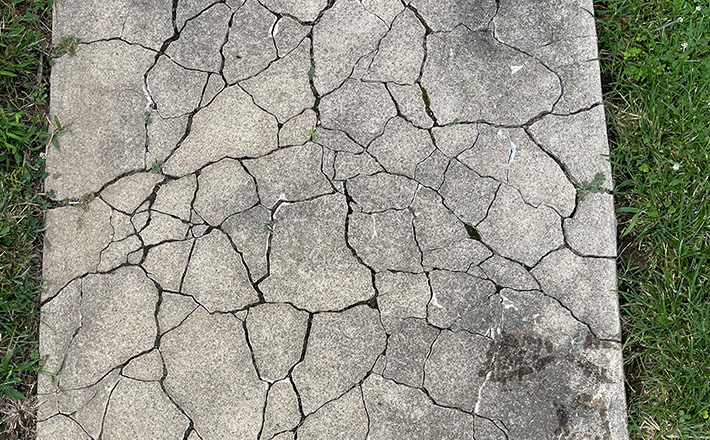
Foundation Cracks: A Warning Sign of Foundation Problems
If you’re a homeowner in South Central Kentucky & Middle Tennessee, ensuring the structural integrity of your house is essential for the safety and peace of mind of your family.
Even the seemingly harmless cracks can be signs of potential foundation issues. Therefore, it’s crucial to understand the various types of foundation cracks, their causes, how to detect them, and most importantly, what to do when you find them.
What Are Foundation Cracks and Why Do They Occur?
Foundation cracks can occur due to various forces that impact your home’s foundation. Some of the factors that can contribute to these cracks include construction problems, soil conditions, soil expansion, water intrusion, inadequate drainage, and tree roots among others. These elements can cause the earth beneath the foundation to shift, leading to tension and compression in the concrete. Over time, these stresses may become visible cracks.
Different Types of Foundation Cracks
Horizontal cracks are often a sign of serious stress in your foundation. They typically form when the foundation is subjected to lateral pressure, which may come from soil or water buildup against the outside of the wall.
Vertical cracks are not as alarming as horizontal ones but should still be monitored. They can appear due to the natural shrinkage of concrete or minor settlement shifts that occur over the years.
These types of cracks are most often seen in brick or block foundations. They are usually indicative of settlement or ongoing movement within the foundation.
Why Customers Love Foundation Solutions Group
Fix-It-Forever Guarantee
We stand behind our work with a lifetime warranty on our repairs.
Community-Driven
We're a proud Bowling Green business comitted to serving our neighbors - not a national chain.
Proven Solutions
Our time-tested methods ensure your home's foundation stays safe and secure for years to come.
Expertise
With over 20 years of experience, we know how to do the job right the first time - no cutting corners.
Customer Education
We believe in empowering homeowners by educating them on how to protect their property.
When do Foundation Cracks Indicate Foundation Problems in Your Home?
Spotting foundation issues early can prevent costly structural damage. Here are some other signs that the cracks in your foundation are indications of a problem:
The cracks are more significant than a quarter of an inch in width.
There is noticeable tilting or shifting of the foundation.
Doors and windows don’t close properly, or there are gaps between them and the frames.
Cracks appear in interior walls, especially above doorways and windows.
Your floors slope or feel uneven when walking on them.
It’s important to contact a professional to rule out any structural issues, and crucial to have a professional foundation inspection and repair if necessary.
Financing that Fits your Budget and Fixes your Foundation Now
No one wants to have to fix their foundation, but when it’s necessary, our financing solutions can help you get the work done when you need it most.
Hear from Our Happy Customers

"These days, it is a rare experience to feel like you are dealing with professional, honest contractors. Everyone we encountered at this company was a pleasure to work with. At no point did we feel he was trying to ‘up-sell’ our job, and he took his time explaining everything to us. It was a great experience from start to finish."
- Emily C
The Risks of Ignoring Foundation Cracks
Choosing to ignore foundation cracks can lead to a domino effect of problems that compromise your home’s safety and your finances.
Structural Damage to Your Home
Cracks can worsen over time, potentially leading to floors that sag, walls that lean, and even the collapse of sections of your home.
Water Damage and Mold Growth
In addition to structural damage, foundation cracks can be entryways for water, causing mold and mildew to grow in your home. This is not only a health hazard but also another indicator of a larger problem at hand.
Financial Consequences of Delaying Repairs
The longer you put off addressing a foundation issue, the more expensive it becomes to fix. Additionally, potential buyers can use foundation problems as a negotiation tool when considering the purchase of your home.
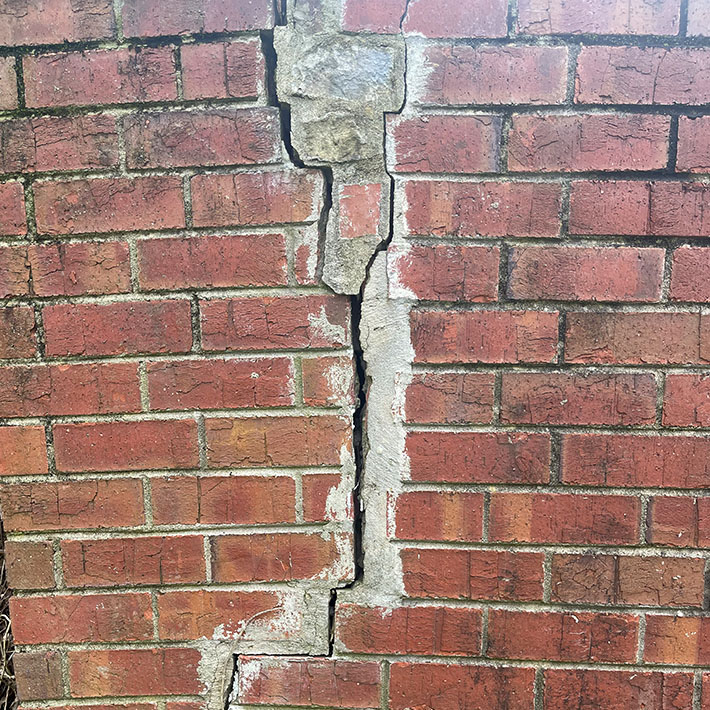
Foundation Solutions Group's Service Area
KENTUCKY: Bowling Green, Rochester, Rockfield, Russellville, Sharon Grove, Smiths Grove, Woodburn, Woodbury, Glasgow, Mammoth Cave, Cave City, Leitchfield, Scottsville, Franklin, Elizabethtown, Owensboro, Morgantown, Munfordville, Oakland
TENNESSEE: Hendersonville, Gallatin, Portland, White House, La Vergne, Westmoreland, Franklin, Springfield, College Grove
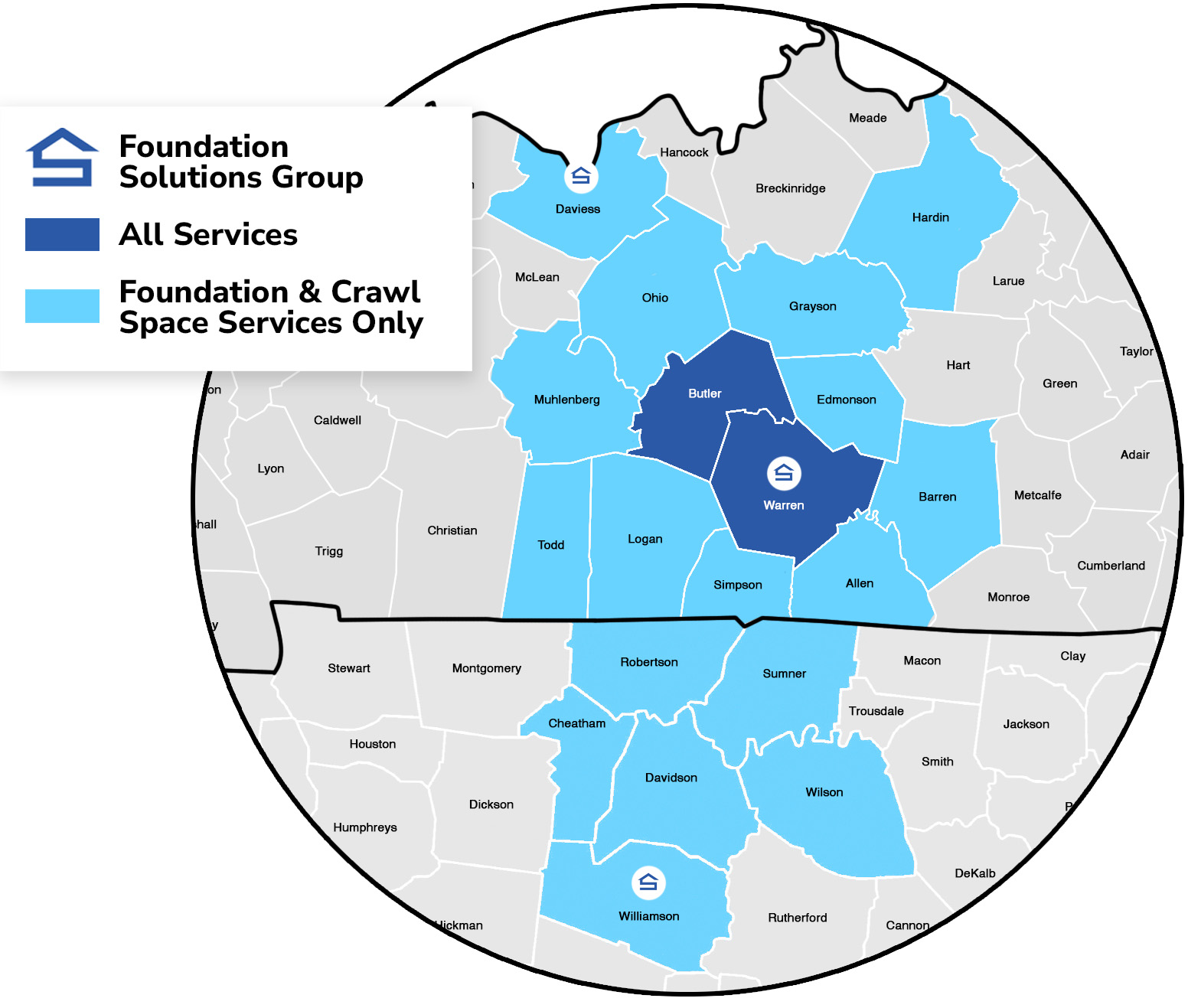
To Understand Your Foundation Cracks, Schedule a Free Inspection
It is crucial to seek professional guidance when it comes to foundation issues. By reaching out to Foundation Solutions Group, you can take the first step towards getting a comprehensive assessment of your home’s foundation health.
Our team of experts is committed to providing you with support, answering your queries, and offering personalized solutions that are tailored to your home’s unique needs. Don’t wait until it’s too late – a strong foundation is the bedrock of your home. Contact us today for a free foundation inspection and secure your peace of mind.
Foundation Crack Repair Methods
When it comes to fixing foundation cracks, there’s no one-size-fits-all approach. The method used will depend on the type of crack and the underlying cause.
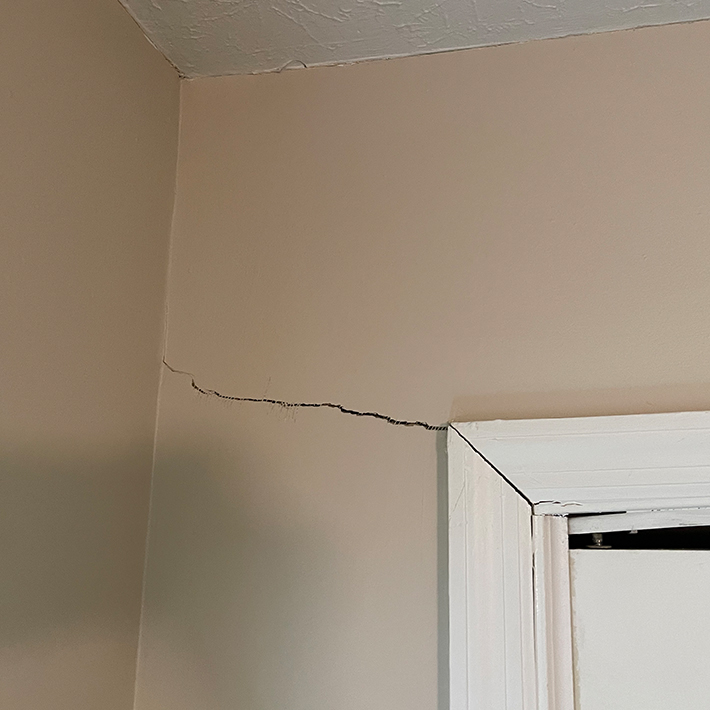
Epoxy Injection
Epoxy is injected into the crack under pressure, providing a barrier against water infiltration. This technique is best for smaller, non-structural cracks.
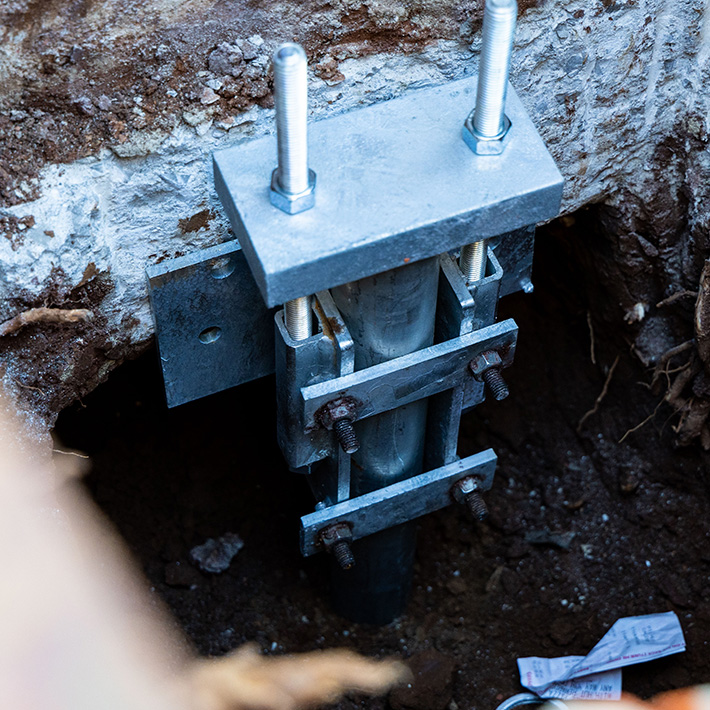
Piering
For more substantial foundation issues, piering may be necessary. This method involves installing steel piers next to the foundation to stabilize and, in some cases, even lift the foundation back into place.
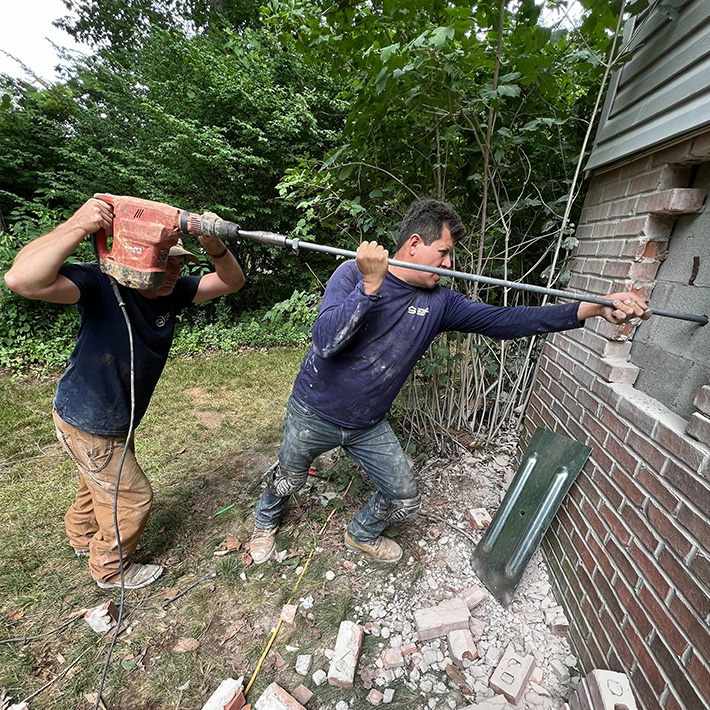
Wall Anchors
Wall anchors are used to stabilize and straighten walls that have been bowing or leaning due to foundation issues.
Addressing the Cause, Not Just the Symptom
It’s important to understand that repairing a foundation crack is only addressing the symptom. To prevent future issues, the underlying cause should be identified and remedied, be it poor construction, soil conditions, or inadequate drainage.
